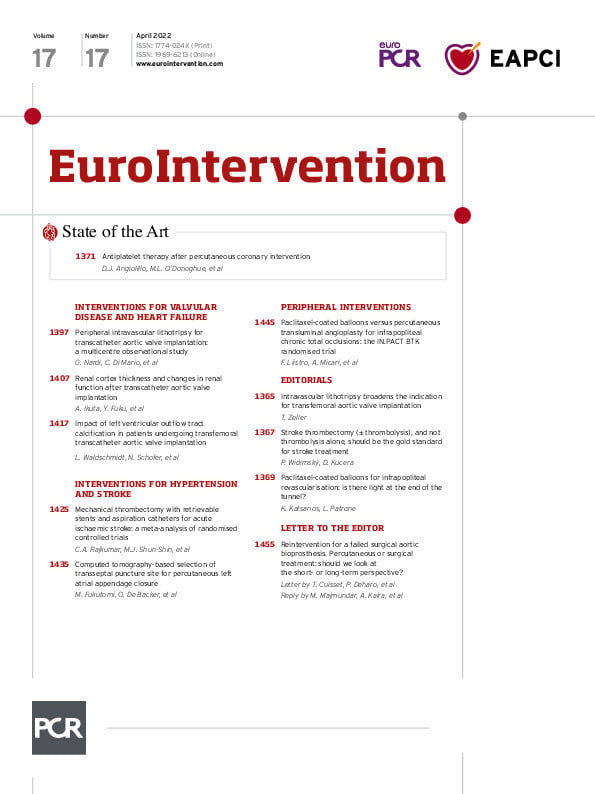We read with interest the work of Majmundar et al, published recently by EuroIntervention1. Interestingly, we recently published a large, matched comparison of valve-in-valve transcatheter aortic valve implantation (ViV TAVI) versus redo surgical aortic valve replacement (SAVR)2. We have to congratulate Majmundar and colleagues for providing with their updated work, the largest propensity analysis on this subset of patients. Indeed, the number of patients presenting with a failed aortic bioprosthesis is increasing along with life expectancy. Therefore, those patients represent a new challenge for the physician. Recent European guidelines recommend redo surgery as first-line treatment in case of a failed aortic bioprosthesis due to the paucity of long-term data on ViV TAVI3. However, it now seems to be demonstrated that ViV TAVI is associated with better short-term outcomes than redo SAVR. In the vast majority of cases, ViV TAVI represents a controlled intervention with a low rate of complications, which translates into lower early morbidity and mortality than a second surgery in an elderly patient. Therefore, from a short-term perspective, ViV TAVI is a safe and less invasive treatment when dealing with a degenerated surgical aortic bioprosthesis.
However, long-term outcomes after ViV TAVI remain a matter of debate. Data from our analysis showed, for a mean follow-up of 790 days, higher rates of rehospitalisation for heart failure after ViV TAVI compared to redo SAVR2. Majmundar et al report the same conclusions, with increased risk of hospital readmission as early as 30 days and 6 months after the reintervention. More importantly, their work emphasises that different factors may lead to readmission in ViV TAVI and redo SAVR. Redo SAVR has a particular risk of worse outcomes in case of chronic lung disease and chronic kidney disease. On the other hand, ViV TAVI may be less beneficial in patients with heart failure and atrial fibrillation. Majmundar et al highlight the high rates of readmission for cardiac or non-cardiac causes after reintervention for a failed aortic bioprosthesis. Those conclusions emphasise the need for improvement in this subtype of patients.
Pooled together, these data provide meaningful information considering the growing population with a failed surgical aortic bioprosthesis which will require reintervention. Overall, ViV TAVI has become a valid alternative to redo SAVR and offers better short-term outcomes. However, long-term follow-up mitigates this initial superiority of ViV TAVI over redo SAVR. Although rehospitalisation for heart failure could be increased after ViV TAVI, several factors (such as lung and kidney disease, heart failure, atrial fibrillation) could play a significant role in the decision-making process regarding the type of reintervention (i.e., ViV TAVI vs redo SAVR). Therefore, randomised data and longer follow-up are required to better define which patient will benefit from percutaneous or surgical aortic replacement when facing a degenerated aortic bioprosthesis.
Conflict of interest statement
T. Cuisset reports consulting or speaker activities for Edwards, Boston Scientific and Medtronic. The other authors have no conflicts of interest to declare.
Supplementary data
To read the full content of this article, please download the PDF.

